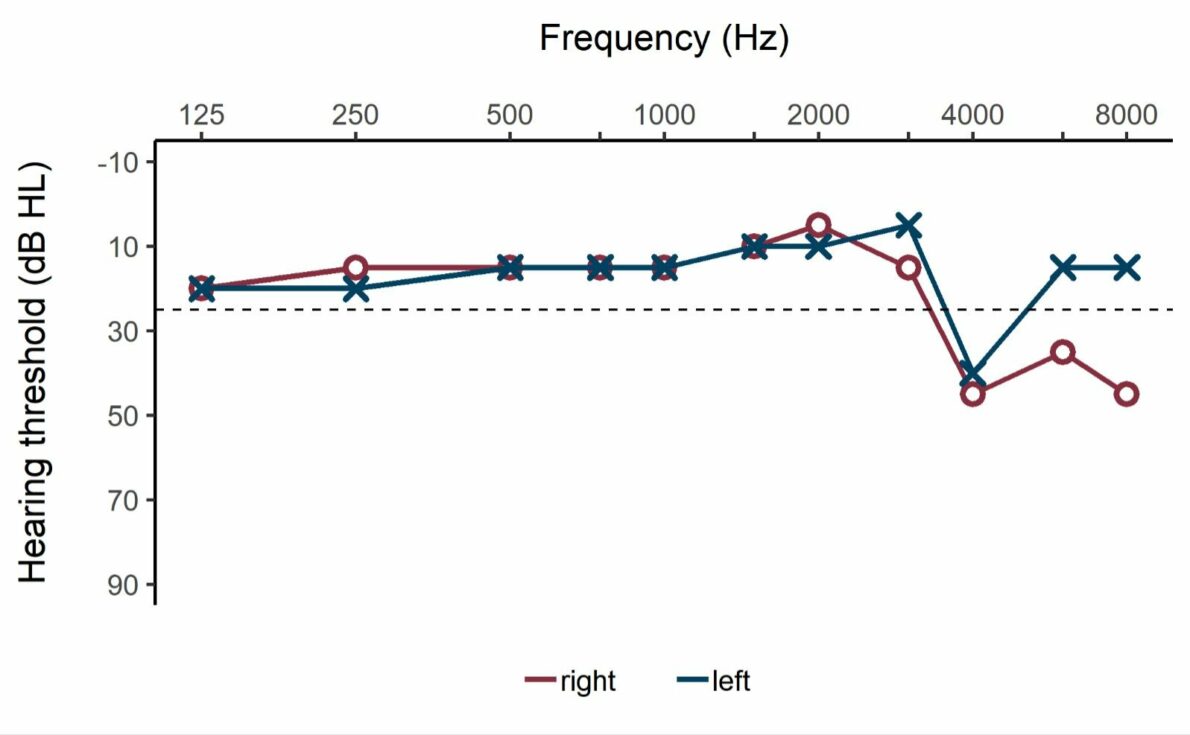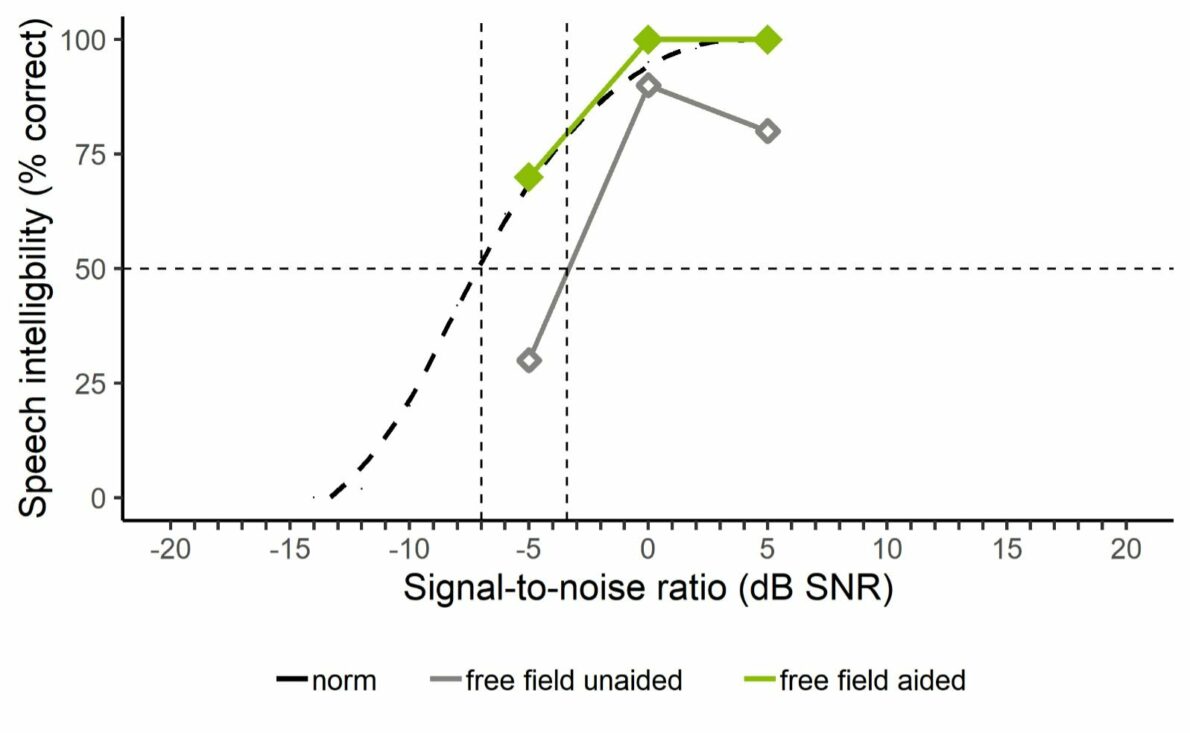
There is more to life than the audiogram…
Audiologists are taught the importance of the audiogram. For good reason, as audiometry is the gold standard for diagnostics. But there is more to life than pure tones in quiet, right?
When I started studying Speech-Language Pathology and Audiology Sciences in Leuven (Belgium), I never could have imagined where I would end up today. At the time, I wanted to become a speech-language therapist, specialized in the rehabilitation of acquired neurological speech and language problems. Little did I know that I would lose my heart to audiology, and to research for that matter, along the way. Admittedly, it is all about communication and neuroscience, not so different in a way. Although I think it was a love for technology and interdisciplinarity – something that is spread very diligently by the professors in Leuven – that attracted me to audiology. I started working as a teaching assistant for the audiology educational program and became a PhD student at the same time. Very quickly my interests became clear: I wanted to learn more about how hearing changes throughout adult life, beyond the audiogram.
Research beyond the audiogram…
This might sound a bit disrespectful towards the audiogram, but that is definitely not my intention. Pure-tone audiometry is the gold standard for diagnostics in clinical audiological practice and indeed, provides one of the most valuable pieces of information for us, audiologists. From a researcher’s perspective, gold standards are also interesting because they are so extensively documented that we can use them to verify new methods against. And that is exactly what we did. We invited adults of different ages, all with a similar hearing loss or, on the contrary, with very good audiograms (something that becomes quite rare as we grow older) to take part in our research. By selecting certain audiometric profiles, thereby controlling for hearing sensitivity, we could demonstrate that central auditory abilities (such as binaural temporal processing) and cognitive abilities (such as memory performance) also change throughout life, independent from hearing sensitivity. In other words, hearing problems can emerge even when the audiogram is normal!
When I joined Phonak last year, I had the opportunity to visit hearing care professionals (HCPs) in their practices and saw firsthand how hearing technologies can change lives. In fact, given my background, there was one visit that really stood out for me.
A real-life story that made me think about this even more…
A 58 year old man, who used to love a busy lifestyle, walked into an HCP’s office and reported that he had started noticing changes in his hearing. Very gradually, these hearing problems also changed the way he experienced social activities, he mentioned, and constantly compensating for missing out on conversations turned out to be exhausting. His wife had noticed the changes as well. Not only the changes to her husband’s hearing, but to his behavior and her life as well. She mentioned that they were going out less than before, and when they would go out, her husband would often feel a little lost. When the HCP performed audiometric assessment, she noticed that most of the husband’s hearing thresholds were within the normal range (Figure 1). There was no way that he would be eligible for hearing aid reimbursement based on these results. Based on the couple’s experiences and changes in lifestyle, she also decided to conduct a fixed signal-to-noise ratio (SNR) speech-in-noise test under headphones and that is where the problems unfolded.

The speech-in-noise results were not what one would expect based on the audiogram: they showed a deteriorated speech-reception threshold (SRT) for both ears compared with the norm score (Figure 2). The steepness of the psychometric norm curve (*) even implied a loss of intelligibility in challenging listening situations of +/- 45% for the right ear and 70% for the left ear. The HCP discussed the different options with the couple, set joint communication goals, and together they decided to start a trial period with a set of two Phonak Audéo Belong devices. With SNR rather than audibility being the problem, we were curious to the results.

A couple of visits and fine-tunings later, the clients talked about how happy they were with the devices. A free field speech-in-noise test, both with and without the devices, confirmed the couple’s experiences: when wearing the devices, the husband’s intelligibility in noise was boosted. The aided performance even nicely aligned with the norm curve (Figure 3)!

What does this mean for audiologists?
I thought about this couple a lot afterwards. Even though we need the audiogram and it contains so much valuable information, everyday life surpasses the detection of pure tones in quiet. Speech understanding involves the temporal encoding of speech envelope and temporal fine structure information, sustained attention, language skills, working memory… I am just saying that there is more to intelligibility than audibility – and very often it might be a better SNR that we need!
Luckily, technology can also provide help there. Directional microphones in hearing aids can increase SNR on average by 3-6 dB (Ricketts, 2001) and remote microphones can assist us in noisy and reverberant rooms or when listening over distance. It is worth using all the tools that we have available in clinical practice, especially as it takes courage to step into an HCP’s office. So, let’s not send people home because their audiogram is normal… they might still struggle. After all, it is in busy, noisy environments that life unfolds and we can also make a difference there!
Reference
Ricketts, T. A. (2001). Directional Hearing Aids. Trends in Amplification, 5(4), 139–176. https://doi.org/10.1177/108471380100500401
If you’d like to read more on this topic, we invite you to read an insightful article from our blog archives – Benefits beyond the audiogram. It shares findings from the world’s largest consumer surveys on hearing aids and hearing loss and reminds us that we must look beyond the audiogram for all the benefits of hearing technology.
